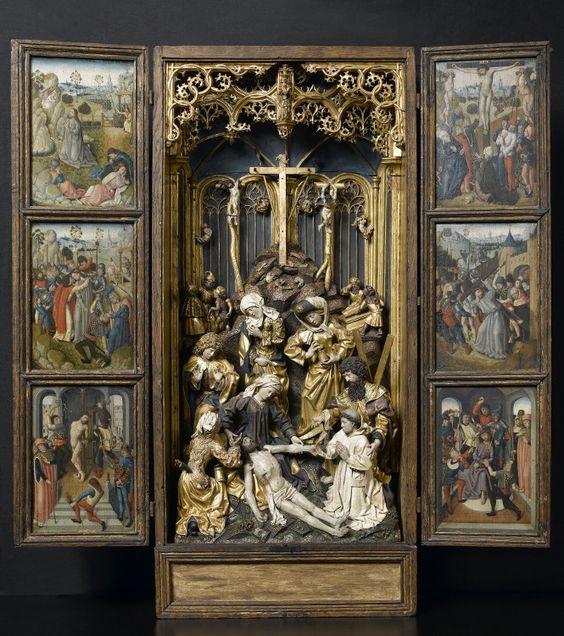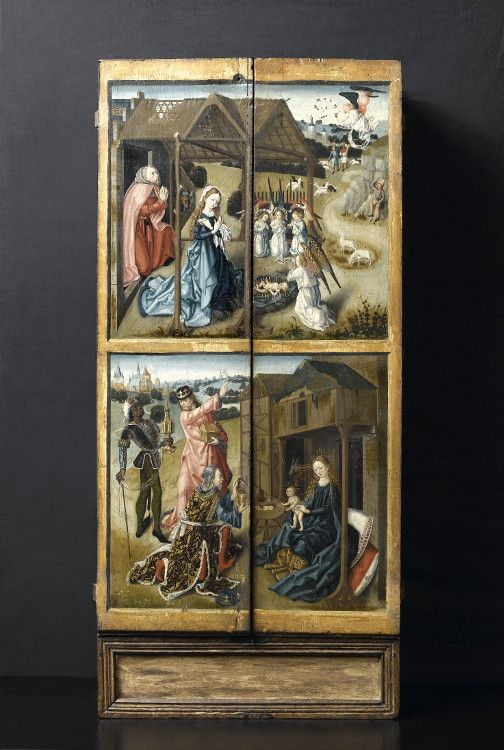35
We cannot hope to explore in detail the complex genealogy of hypermediacy through centuries of Western visual representation; we can only offer a few examples that are particularly resonant with digital hypermediacy today. Some resonances seem obvious. For example, the European cathedral with its stained glass, relief statuary, and inscriptions was a collection of hypermediated spaces, both physical and representational. And within the grand space of the cathedral, altarpieces provided a sophisticated form of hypermediacy, because they not only juxtaposed media but also embodied contradictory spatial logics. As perspectival representation came into painting, it is interesting to see, for example, a Flemish altarpiece by Arnt van Kalker, now in the Musee de Cluny in Paris, with a carved representation of the Passion at the center and painted perspectival scenes on both the inside and the outside of the cabinet doors. The closed doors depict depth in the represented space; when they are opened, they reveal a bas-relief three-dimensional Passion scene that stops at the back of the cabinet. Through this interplay of the real third dimension with its perspectival representation, the Kalker altarpiece connects the older sculptural tradition with the newer tradition of perspectival representation.
We cannot hope to explore in detail the complex genealogy of hypermediacy through centuries of Western visual representation; we can only offer a few examples that are particularly resonant with digital hypermediacy today. Some resonances seem obvious. For example, the European cathedral with its stained glass, relief statuary, and inscriptions was a collection of hypermediated spaces, both physical and representational. And within the grand space of the cathedral, altarpieces provided a sophisticated form of hypermediacy, because they not only juxtaposed media but also embodied contradictory spatial logics. As perspectival representation came into painting, it is interesting to see, for example, a Flemish altarpiece by Arnt van Kalker, now in the Musee de Cluny in Paris, with a carved representation of the Passion at the center and painted perspectival scenes on both the inside and the outside of the cabinet doors. The closed doors depict depth in the represented space; when they are opened, they reveal a bas-relief three-dimensional Passion scene that stops at the back of the cabinet. Through this interplay of the real third dimension with its perspectival representation, the Kalker altarpiece connects the older sculptural tradition with the newer tradition of perspectival representation.
 Log-in
Log-in Source type: picture
Source type: picture Source type: picture
Source type: picture